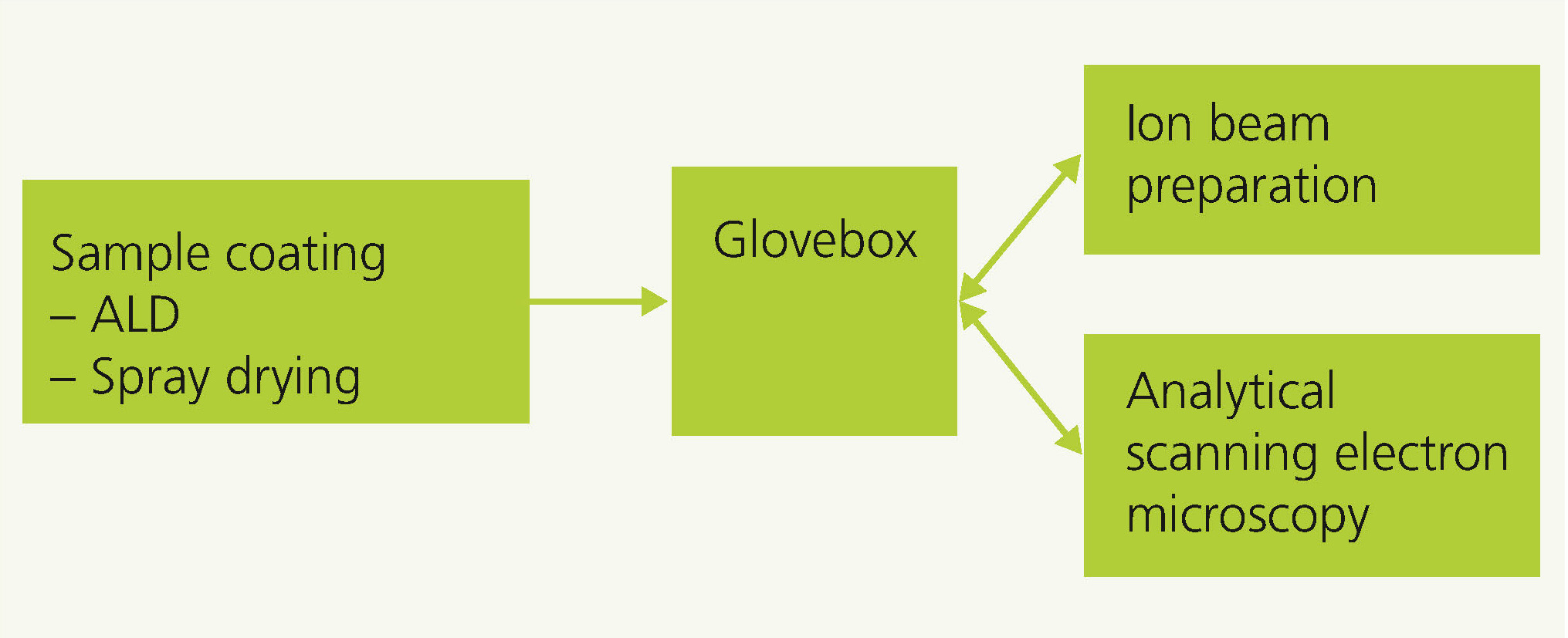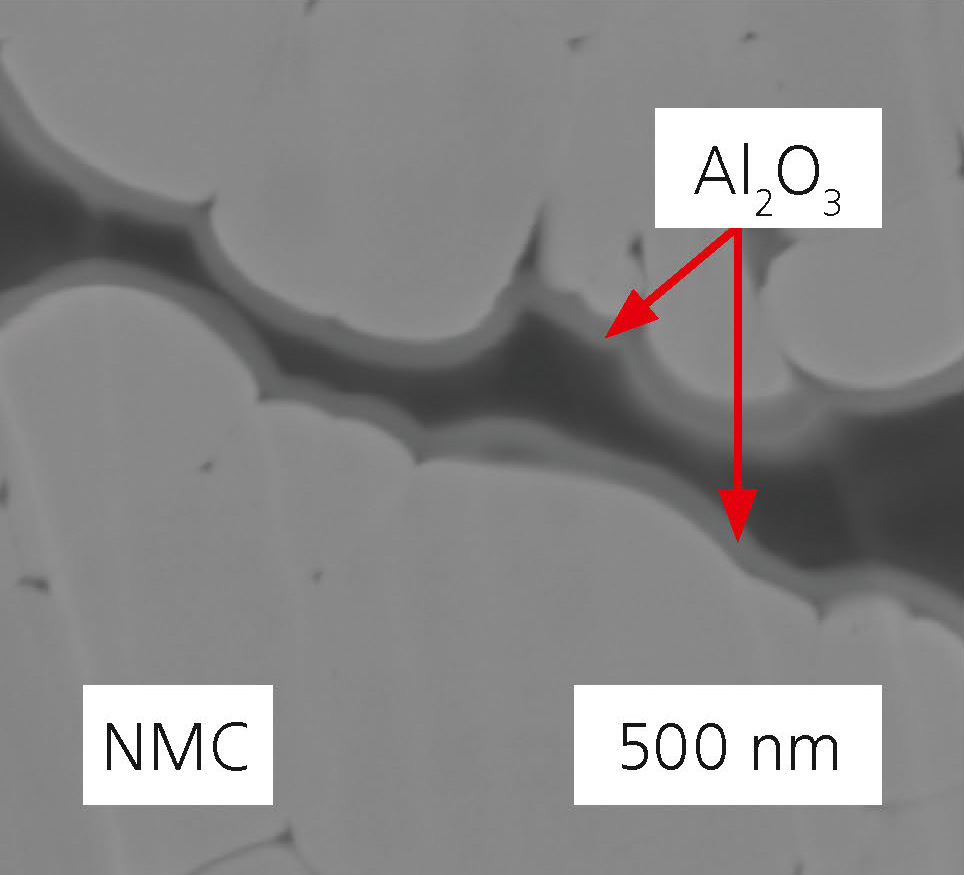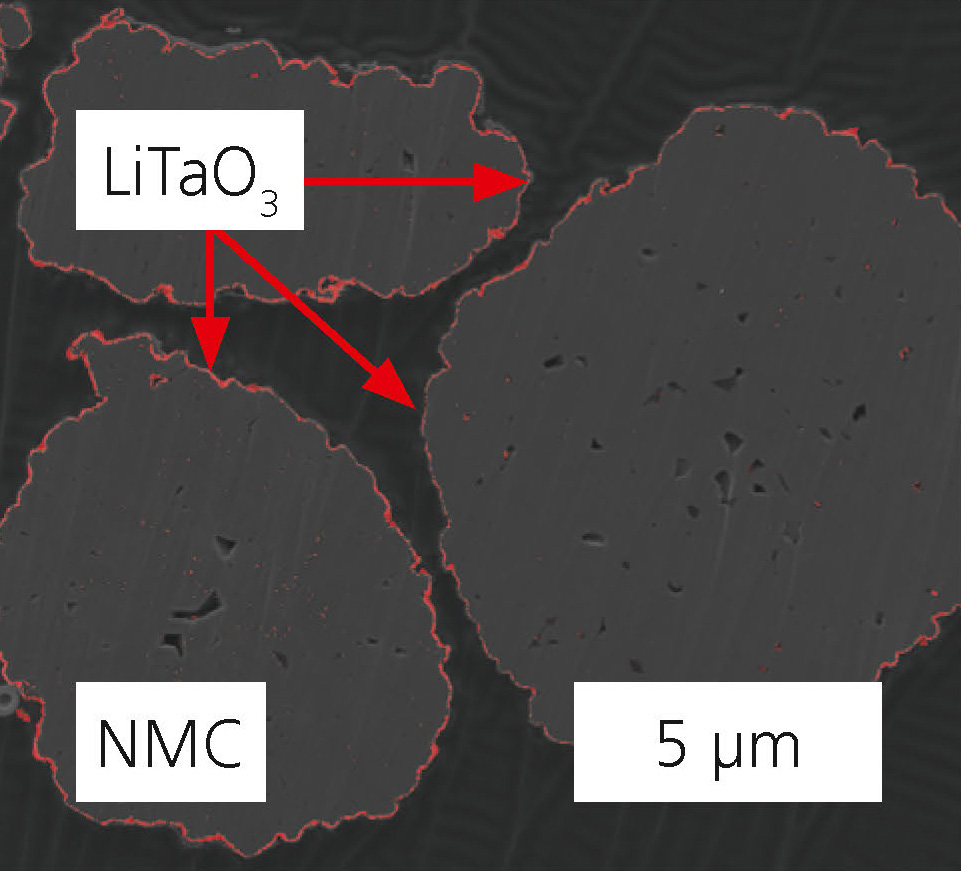
High-resolution characterization of coated battery powders
Current research




The success of electromobility is highly dependent on the development and production of reliable and durable batteries. At Fraunhofer IKTS, materials and technologies are developed that meet the highest requirements for the energy and power densities of batteries. The coating of active materials using atomic layer deposition (ALD) and spray drying is a key step in increasing the longevity and energy density of batteries. Protective layers just a few nanometers thick, e.g. made of Al2O3 or LiTaO3 , improve the interface properties of the active materials by minimizing undesired decomposition reactions between the battery components. A workflow developed at Fraunhofer IKTS is used to prepare and characterize these thin layers, which guarantees inert conditions for the entire analysis process (Figure 1).
Using ion beam-based preparation methods established at Fraunhofer IKTS, large-scale structural areas are prepared as cross-sections, free of artifacts. In doing so, the in-situ sample cooling prevents the samples from heating up with liquid nitrogen.
The precisely cut battery powder particles are imaged and characterized in the field emission scanning electron microscope (FE-SEM). Figure 2 shows Lithium-Nickel-Manganese-Cobalt-Oxide (NMC) powder particles that were coated with an approximately 40 nm thin Al2O3 layer using the ALD process. In order to image and characterize ultrathin layers in FE-SEM with sharp edges and surface sensitivity, it is essential to work at low acceleration voltages. This means that the interaction volume of the primary electrons with the sample is so low that particles and coating can be analyzed reliably.
A windowless SDD detector is used for characterization using energy-dispersive X-ray analysis (EDS) in low-voltage microscopy. This is characterized by high signal intensities and high sensitivity. It enables, for example, the mapping of the homogeneous distribution of a few nanometer thin LiTaO3 layer on NMC particles using EDS mapping (Figure 3).
For further layer analyses (e.g. of layer adhesion, atomic structures), high-resolution transmission electron microscopy (HR-TEM) is available at Fraunhofer IKTS. By using highly specialized analytical methods, Fraunhofer IKTS is making a decisive contribution to solving the challenges of material development for longer-lasting and more powerful batteries.
Services and cooperation offered
- Powder coating using atomic layer deposition (ALD) and spray drying
- Artifact-free microstructure preparation of battery materials and water-sensitive samples under inert conditions
- High-resolution analytical scanning electron microscopy (FE-SEM) and transmission electron microscopy (HR-TEM)
This work was financially supported by the AiF (IGF project 22233 BR).
Supported by

